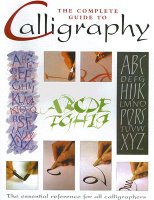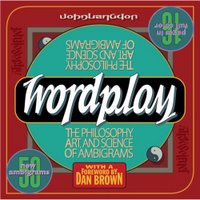Creating Ambigram Art
I think to be a good artist in this field, you need to visualise letterforms in as many ways as possible - different styles, different forms, from different vantage points (upside down, mirror, 90deg rotation)...and then implement it as beautifully and as elegantly as you can (or as much as the word permits). There is a secret to making ambigrams work - its based on illusion, your mind doesn't need to see the entire letterform to comprehend it, only the basic strokes that define a letter (actually two - letter and its inversion) and distinguish it from others are sufficient.
I have two wonderful references on Ambigram and Graphic Art, which come in handy while desinging the ambigrams. If you would like to venture into ambigrams, calligraphy or general typography, these refereces are essential.
Wordplay - Philosophy, Art and Science of Ambigrams by John Langdon:
I would call this book the ‘Holy Grail’ of ambigrams. If you want to venture into field of ambigrams, this is a must buy. It is a magical composition of art, science and philosophy all of which blend together to produce stunning pieces of ambigram artwork. It is the second edition (published in Nov, 2005), the first edition was published in 1992. John Langdon has been making ambigrams for almost 30 years now. His inspiration is from the arts of Salvador Dali and M.C.Escher. I was astounded by Escher's works in this book. The book draws appreciation not on the basis of mere symmetry, but the philosophical and scientific (both having opposite yet complimentary views, like the yin & yang) explanations behind style and artform of each ambigram. He illustrates how an artwork is created using the implications of its inherent nature and meaning. Towards the end, he also gives a step by step tutorial on ‘How to make Ambigrams’ using an example of word ‘Philosophy’.
 I was looking for a book which can give me more insights into alphabet’s design, more and more fonts, and calligraphic artwork. This book is really helpful in learning to master design of letterforms. It gives a comprehensive analysis of major calligraphic techniques and their uses, with step-by-step instruction for creating beautiful designs. It is replete with calligraphic fonts which look very arty and stylish and contains examples of inspirational work by leading calligraphers. The book also contains a section on advanced calligraphy which includes using illuminated characters, creating flourishing designs, interpreting words as images, and heraldic designs. All in all, this book contains almost everything that you might need for creating a good calligraphic artwork (except maybe the inspiration ;) ).
I was looking for a book which can give me more insights into alphabet’s design, more and more fonts, and calligraphic artwork. This book is really helpful in learning to master design of letterforms. It gives a comprehensive analysis of major calligraphic techniques and their uses, with step-by-step instruction for creating beautiful designs. It is replete with calligraphic fonts which look very arty and stylish and contains examples of inspirational work by leading calligraphers. The book also contains a section on advanced calligraphy which includes using illuminated characters, creating flourishing designs, interpreting words as images, and heraldic designs. All in all, this book contains almost everything that you might need for creating a good calligraphic artwork (except maybe the inspiration ;) ).













0 Comments:
Post a Comment
<< Home